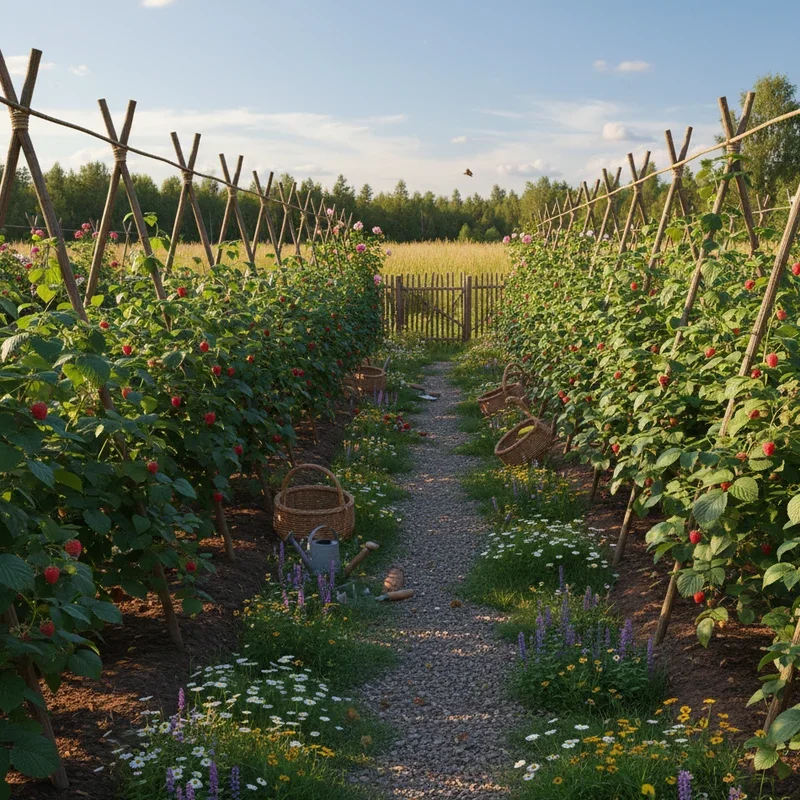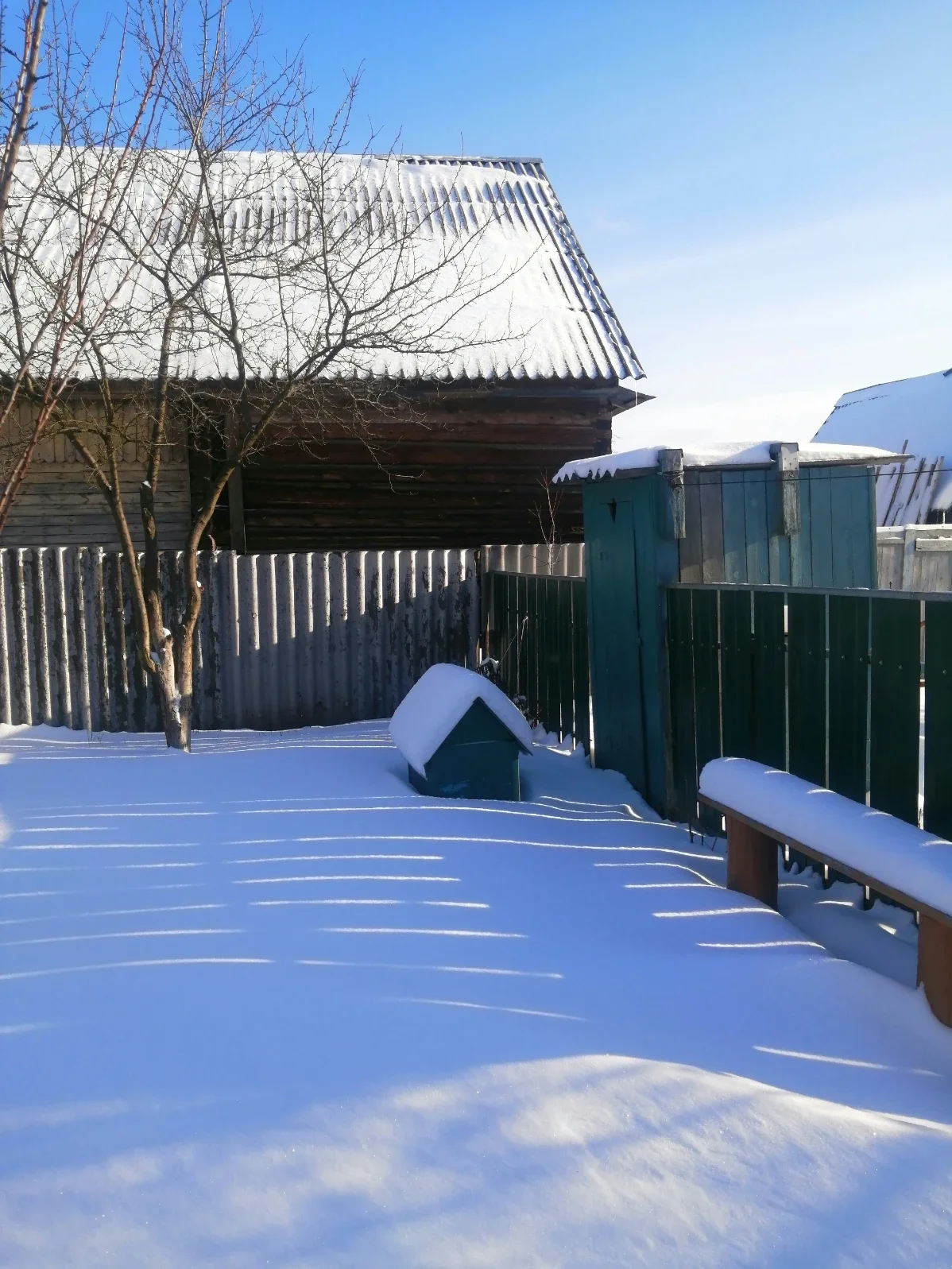15 Raspberry Garden Ideas for a Lush Backyard Harvest
Discover 15 creative raspberry garden ideas for abundant harvests. From trellises to companion planting, grow juicy berries in any backyard space!
Have you ever dreamed of stepping into your backyard and plucking sun-warmed raspberries straight from the cane, their sweet juice bursting on your tongue? There's something magical about growing your own raspberries, watching those delicate white flowers transform into ruby gems that make store-bought berries pale in comparison. Whether you're working with acres of land or just a tiny corner of your yard, raspberries can thrive with the right approach and a dash of creativity. These resilient plants reward patient gardeners with years of abundant harvests, turning your outdoor space into a productive paradise that feeds both body and soul. From vertical growing solutions that maximize small spaces to companion planting strategies that boost your yields, the possibilities for creating a thriving raspberry garden are endless. Ready to transform your backyard into a berry wonderland that'll have your neighbors peering over the fence with envy? Let's dig into fifteen innovative ideas that'll help you grow the most luscious raspberry harvest your garden has ever seen.
1. Vertical Raspberry Trellis Systems
Transform your raspberry patch into a space-saving powerhouse by training canes upward on sturdy trellis systems that make harvesting a breeze. Install T-posts with horizontal wires at different heights, creating a framework where primocanes and floricanes grow in organized rows that maximize sunlight exposure. This vertical approach prevents canes from flopping over, reduces disease by improving air circulation, and makes those precious berries easily accessible without backbreaking bending. Consider using a V-trellis system that angles canes outward, creating a tunnel effect perfect for walking through during harvest time. Build your trellis from weather-resistant materials like galvanized steel or treated wood that'll withstand years of vigorous growth. Space support posts every 15-20 feet with tensioned wires that won't sag under heavy fruit loads. Your vertical system transforms chaotic raspberry patches into neat, productive walls of berries that yield more fruit per square foot than traditional growing methods.
2. Raised Bed Raspberry Gardens
Elevate your raspberry growing game with raised beds that provide perfect drainage, easier maintenance, and better soil control for optimal berry production. Construct beds at least 12 inches deep using rot-resistant materials like cedar or composite lumber, filling them with rich, well-draining soil amended with compost. Raised beds warm up faster in spring, extending your growing season and encouraging earlier fruit production than in-ground plantings. Design beds 3-4 feet wide for easy access from both sides, preventing soil compaction from stepping into growing areas. Install drip irrigation directly into beds for efficient watering that keeps foliage dry and reduces disease pressure. Add trellises directly to bed frames, creating integrated support systems that keep everything contained and organized. Position beds in full sun locations where raspberries receive at least 6-8 hours of direct light daily. These controlled environments let you manage soil pH precisely, ensuring your raspberries get exactly what they need for abundant harvests.
3. Container Raspberry Growing
Unlock raspberry growing potential in small spaces by cultivating compact varieties in containers that turn patios, balconies, and decks into productive mini-orchards. Choose containers at least 24 inches wide and deep, providing adequate root space for healthy cane development and fruit production. Select dwarf or compact raspberry varieties specifically bred for container growing, ensuring manageable size without sacrificing berry quality or quantity. Use premium potting mix enriched with slow-release fertilizer, giving container raspberries the nutrients they need throughout the growing season. Position containers on wheeled platforms for easy mobility, allowing you to chase the sun or protect plants from extreme weather. Install small trellises or stakes directly in containers, supporting canes as they grow upward rather than outward. Group multiple containers together for better pollination and visual impact, creating portable raspberry gardens that adapt to your space. This flexible approach lets renters and urban gardeners enjoy homegrown raspberries without permanent landscape commitments.
4. Espalier Raspberry Training
Master the ancient art of espalier by training raspberry canes into decorative patterns against walls, fences, or freestanding frames that combine beauty with productivity. Create horizontal cordons by bending and tying canes along wires, forming living walls that produce berries at comfortable picking heights. This technique maximizes limited space while creating stunning garden features that serve as both food source and living art. Install horizontal support wires every 18 inches, training primocanes horizontally while allowing fruiting laterals to grow vertically. Prune regularly to maintain shape and encourage productive growth along the entire length of trained canes. Position espaliered raspberries against south-facing walls that radiate stored heat, extending the growing season and improving fruit ripening. Use this method to transform boring fences into productive green walls that provide privacy, beauty, and delicious berries. Your espaliered raspberries become conversation pieces that prove food gardens can be just as ornamental as they are functional.
5. Companion Planting with Raspberries
Boost your raspberry garden's health and productivity by strategically planting beneficial companions that deter pests, attract pollinators, and improve soil conditions. Interplant garlic and onions between raspberry rows, their strong scents naturally repelling Japanese beetles and other common raspberry pests. Add nitrogen-fixing plants like clover or beans as living mulch, enriching soil while suppressing weeds that compete for nutrients. Include flowering herbs such as lavender, oregano, and thyme that attract beneficial insects while their aromatic oils confuse and deter harmful pests. Plant marigolds throughout your raspberry patch, their roots releasing compounds that suppress harmful nematodes in the soil. Avoid planting nightshades like tomatoes or potatoes nearby, as they share diseases that can devastate both crops. Position tall sunflowers on the north side for wind protection without shading your sun-loving raspberries. This biodiverse approach creates a balanced ecosystem where plants work together, reducing your workload while increasing overall garden health and raspberry yields.
6. Raspberry Hedgerow Borders
Design productive landscape borders using raspberry canes as living fences that provide privacy, beauty, and bountiful harvests along property lines. Plant raspberries in double or triple rows, creating dense hedgerows that naturally discourage foot traffic while producing pounds of fruit. Space plants closer than traditional recommendations, about 18 inches apart, encouraging thick growth that forms impenetrable barriers within two seasons. Choose thornless varieties for areas near walkways or play spaces, maintaining the hedgerow effect without the hazard. Incorporate both summer and fall-bearing varieties for extended harvest periods that keep your hedgerow productive from early summer through frost. Install simple wire supports along the row's length, keeping canes upright and preventing wind damage. Underplant with low-growing groundcovers like strawberries or creeping thyme that don't compete but add extra harvests. Your raspberry hedgerow becomes a multifunctional landscape element that defines spaces, provides food, and attracts wildlife.
7. Succession Planting for Extended Harvests
Maximize your raspberry harvest window by implementing succession planting strategies that deliver fresh berries from early summer through late fall. Combine June-bearing varieties that fruit on second-year canes with ever-bearing types that produce on both new and old wood. Stagger plantings of the same variety two weeks apart, creating overlapping harvest periods that ensure continuous berry supplies. Plant early, mid-season, and late varieties in different garden sections, each reaching peak production at different times. Include primocane-fruiting varieties that bear fruit on first-year growth, providing fall harvests when summer bearers finish. Create separate management zones for different bearing types, allowing targeted pruning and care that optimizes each variety's potential. Document flowering and fruiting dates to refine your succession planning each year. This strategic approach transforms your raspberry garden from a feast-or-famine situation into a steady supplier of fresh berries for months on end.
8. Mixed Berry Garden Designs
Create diverse berry gardens by combining raspberries with blueberries, blackberries, and strawberries in complementary designs that maximize space and extend harvests. Design in layers with tall blackberries at back, medium-height raspberries in middle, and groundcover strawberries in front. Account for different soil pH requirements by creating adjusted zones or using containers for acid-loving blueberries alongside raspberries. Install shared trellis systems that support both raspberries and trailing blackberries, maximizing vertical growing space. Plan pathways wide enough for comfortable harvesting access to all berry types without damaging plants. Coordinate bloom times to ensure good pollinator activity throughout the growing season, benefiting all berry crops. Use different colored berries to create visual interest, from red and golden raspberries to purple blackberries and blue-tinted blueberries. Your mixed berry garden becomes a diverse ecosystem producing various fruits while reducing pest and disease pressure through crop diversity.
9. Raspberry Arch and Tunnel Gardens
Construct enchanting garden features by training raspberry canes over arched supports, creating magical tunnels that combine function with fairy-tale aesthetics. Build sturdy arches from bent cattle panels or welded wire mesh, spacing them every 4-6 feet along pathways. Train flexible primocanes up and over supports, tying them securely as they grow to create living tunnels. Position these structures over garden paths, transforming mundane walkways into productive passages where berries hang at picking height. Plant different colored varieties on opposite sides, creating stunning visual effects when berries ripen. Install drip irrigation along the arch tops, ensuring even water distribution without wet foliage. Add solar lights within tunnels for evening ambiance and easier dawn or dusk harvesting. These living structures provide shade for understory plants while creating immersive garden experiences. Your raspberry tunnel becomes a destination within your garden, where visitors can literally walk through your harvest.
10. Drip Irrigation Systems for Raspberries
Optimize water usage and plant health by installing efficient drip irrigation systems that deliver moisture directly to raspberry root zones. Lay drip lines along plant rows, positioning emitters near each cane's base for targeted watering that reduces disease-promoting overhead moisture. Install timers that automate watering schedules, ensuring consistent moisture levels crucial for plump berry development. Use pressure-compensating emitters that deliver uniform water amounts regardless of elevation changes or line length. Add inline filters preventing clogging from sediment or organic matter that could disrupt water flow. Incorporate fertilizer injectors for precise nutrient delivery through your irrigation system, simplifying feeding schedules. Mulch over drip lines to reduce evaporation and protect tubing from UV degradation. Monitor soil moisture regularly, adjusting timer settings based on weather conditions and growth stages. This precision watering approach conserves water while promoting deep root growth that makes plants more resilient during dry spells.
11. Mulching Strategies for Moisture Retention
Master the art of mulching to create optimal growing conditions that conserve moisture, suppress weeds, and gradually improve your raspberry bed's soil. Apply 3-4 inch layers of organic mulch like straw, shredded leaves, or wood chips around plants, keeping material away from cane bases to prevent rot. Refresh mulch annually as it decomposes, adding valuable organic matter that improves soil structure and fertility. Use newspaper or cardboard beneath mulch for extra weed suppression during establishment years. Consider living mulches like white clover that fix nitrogen while providing ground cover between rows. Apply mulch after soil warms in spring to maintain temperature while retaining moisture during critical fruiting periods. Choose lighter-colored mulches in hot climates that reflect heat, preventing root zone overheating. Layer different mulch types for varied decomposition rates that provide both immediate and long-term benefits. Your mulching strategy becomes a foundation for healthy soil biology that supports vigorous raspberry growth and abundant fruit production.
12. Natural Pest Control Methods
Protect your raspberry harvest using organic pest management strategies that maintain ecological balance without harmful chemicals. Encourage beneficial predators by planting insectary plants that provide nectar and shelter for pest-eating insects. Install bird netting during ripening periods, creating physical barriers that prevent feathered thieves from stealing your harvest. Apply kaolin clay sprays that create protective mineral barriers deterring Japanese beetles and other leaf-feeding pests. Release beneficial nematodes into soil for controlling root-dwelling pests like raspberry crown borer larvae. Hang yellow sticky traps near plants to monitor and reduce flying pest populations before they reach damaging levels. Spray neem oil solutions during evening hours to control aphids and spider mites without harming pollinators. Handpick larger pests like beetles during cool morning hours when they're sluggish and easier to catch. These integrated approaches create resilient gardens where natural predator-prey relationships keep pest populations below economic thresholds.
13. Raspberry Variety Selection and Placement
Strategically select and position raspberry varieties to maximize your garden's potential based on climate, space, and harvest goals. Research varieties suited to your hardiness zone, choosing cultivars bred for disease resistance and climate adaptation. Plant early varieties in spots receiving morning sun for quickest warming and earliest production. Position fall-bearing types where they'll receive afternoon shade in hot climates, extending harvest quality. Group varieties with similar pruning requirements together, simplifying maintenance and preventing confusion during dormant season care. Include yellow and black raspberry varieties for diverse flavors and extended harvest windows beyond traditional reds. Consider thornless cultivars for gardens where children play or near high-traffic areas. Plant heat-tolerant varieties against south-facing walls that radiate warmth, while cold-sensitive types benefit from protected northern exposures. This thoughtful selection and placement ensures each variety thrives in its microclimate, producing optimal yields.
14. Winter Protection Techniques
Safeguard your raspberry investment with winter protection methods that ensure healthy canes survive harsh conditions for next year's harvest. Bend and bury flexible canes in zones with extreme cold, covering with soil or mulch for insulation against temperature fluctuations. Construct windbreaks using burlap screens or evergreen boughs that deflect desiccating winds without blocking air circulation. Apply thick mulch layers around plant bases after ground freezes, insulating roots from repeated freeze-thaw cycles. Tie canes to supports before winter storms, preventing breakage from snow and ice accumulation. Wrap tender varieties with floating row covers that provide several degrees of frost protection during borderline conditions. Remove protection gradually in spring, avoiding sudden exposure that shocks emerging growth. Prune winter-damaged portions only after growth resumes, when damage extent becomes clear. These protective measures ensure your raspberry plants emerge from winter ready to produce another bountiful harvest.
15. Permaculture Raspberry Food Forest
Design a self-sustaining food forest ecosystem with raspberries as key understory plants that thrive beneath fruit trees and alongside other edibles. Layer raspberries under apple or pear trees that provide dappled shade during hot afternoons while allowing adequate light. Include nitrogen-fixing shrubs like autumn olive or goumi that enrich soil naturally while producing their own edible berries. Plant dynamic accumulator herbs like comfrey that mine deep nutrients and provide chop-and-drop mulch material. Create guilds combining raspberries with beneficial companions that attract pollinators, deter pests, and cycle nutrients. Establish groundcover layers with wild strawberries or mint that protect soil while providing additional harvests. Design water-harvesting swales that direct rainfall to raspberry root zones, reducing irrigation needs. Allow some raspberries to spread naturally, creating self-maintaining patches that require minimal intervention. Your permaculture approach creates resilient, productive systems that mimic nature's abundance while reducing maintenance requirements over time.
Conclusion
Creating a thriving raspberry garden combines smart planning, creative design, and consistent care that rewards you with years of delicious harvests. These fifteen ideas offer solutions for every space and situation, from tiny urban balconies to sprawling country gardens. Remember, successful raspberry growing starts with choosing the right approach for your unique conditions. Begin with one or two techniques that excite you most, expanding as you gain confidence and experience with these remarkable plants.
Read next: 15 Corner Garden Ideas That Beautify Your Yard
Frequently Asked Questions
Q1: When is the best time to plant raspberry canes?
A: Plant dormant bare-root canes in early spring or potted plants anytime during growing season.
Q2: How many raspberry plants does a family of four need?
A: Twenty to twenty-five plants provide ample fresh berries plus extras for preserving.
Q3: Can raspberries grow in partial shade conditions?
A: Yes, but they produce fewer berries; aim for minimum four hours direct sunlight.
Q4: How long do raspberry plants remain productive?
A: Well-maintained raspberry patches produce abundantly for ten to fifteen years before needing replacement.
Q5: Should I remove first-year flowers from new plants?
A: No, unlike strawberries, raspberries can fruit their first year without harming establishment.













































